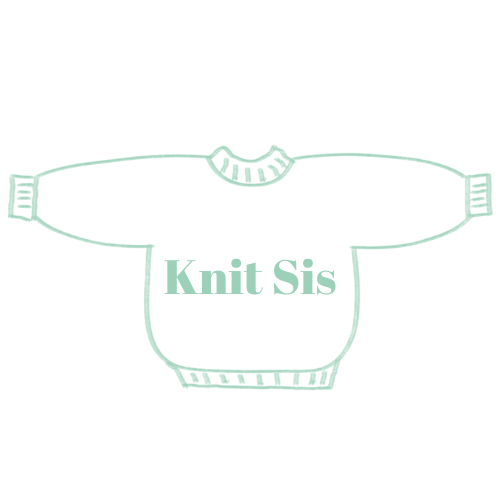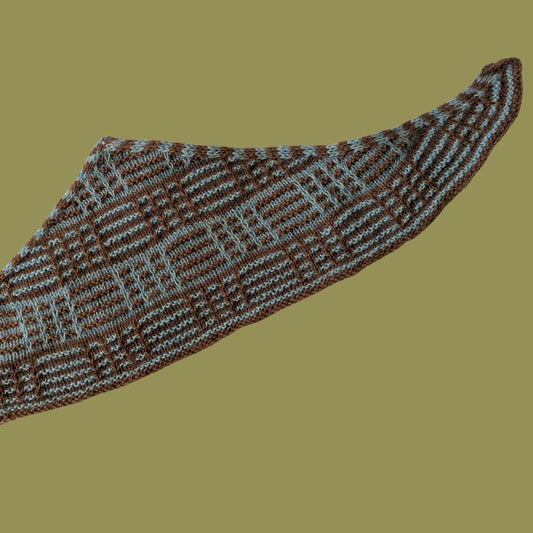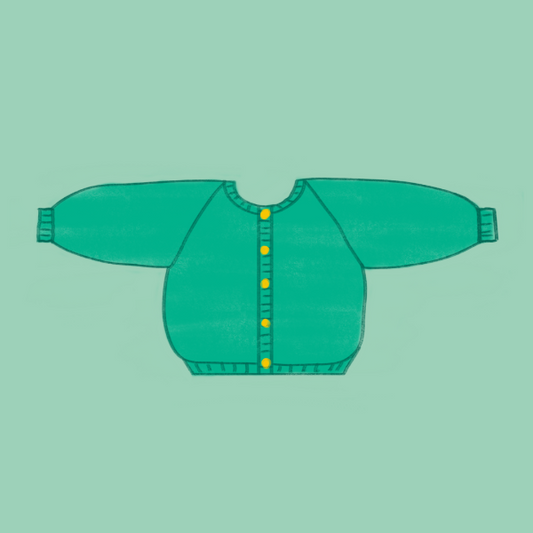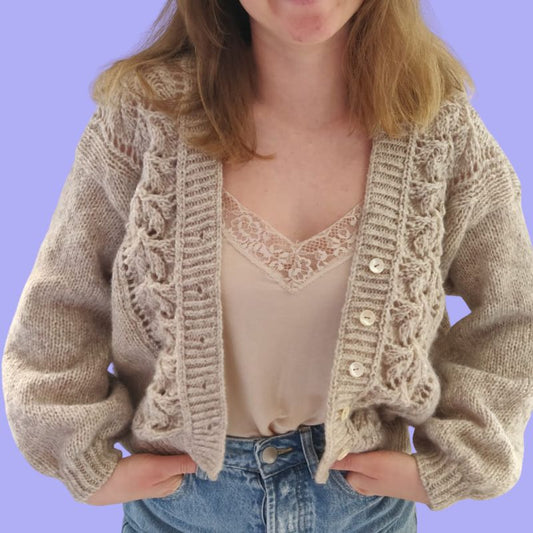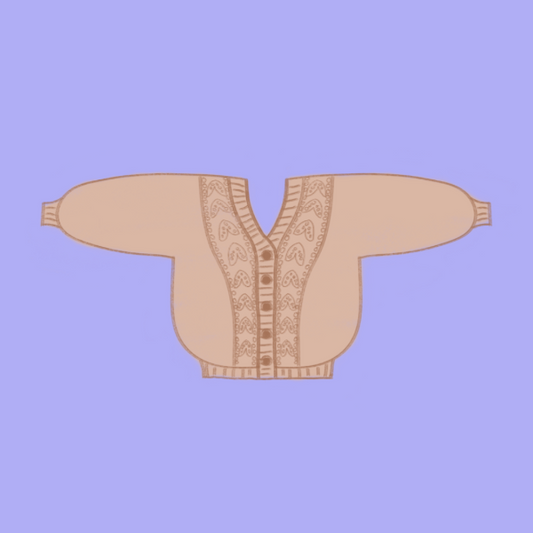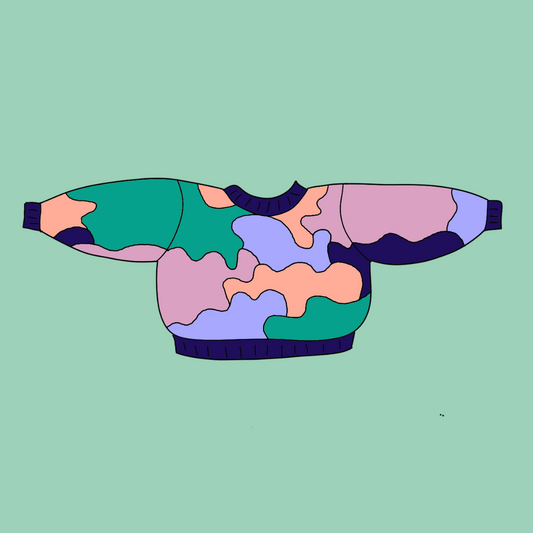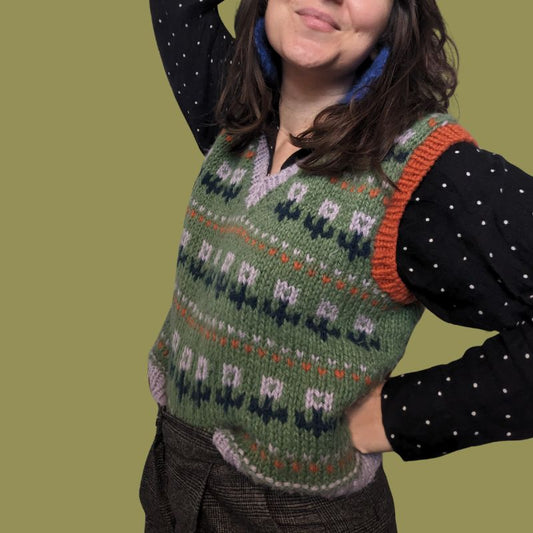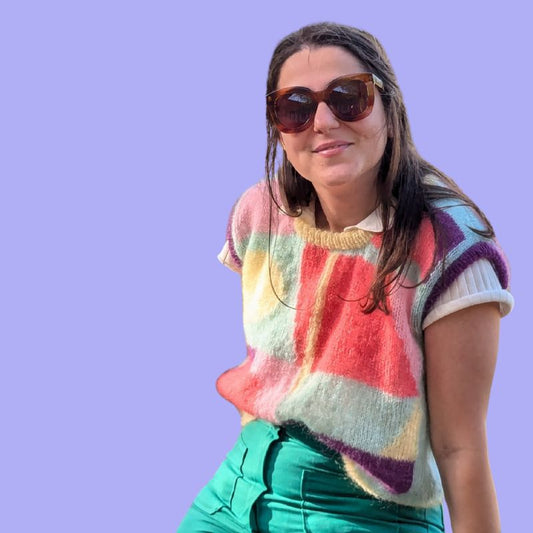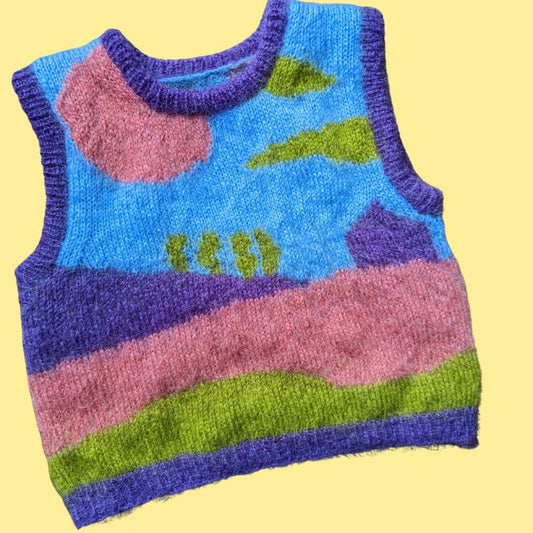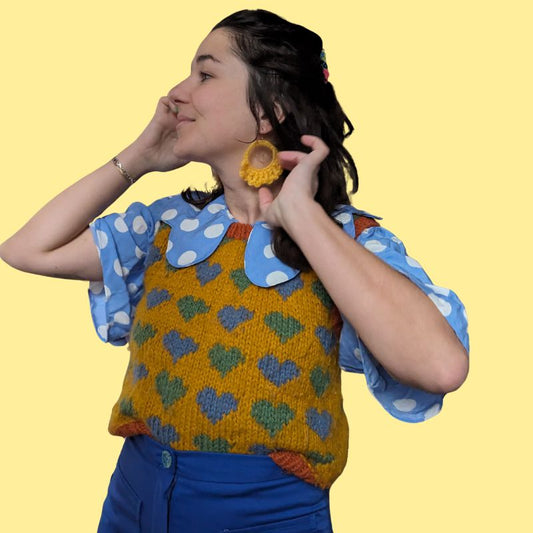Intarsia vs. Jacquard (Fair Isle): Which Technique Should You Choose? 🧶
Knit SisShare
Introduction
Are you hesitating between Intarsia or jacquard (Fair Isle) for your next multi-color project?
At Knit-sis, we've been knitting with Grandma since childhood, and we know how important it is to choose the right technique, based on the pattern, comfort, and final result. Here's a clear and visual comparison to help you decide!
Intarsia vs. Jacquard: Quick Definitions
What is intarsia?
A technique without floating yarn on the reverse: each colored area is knitted with its own yarn, perfect for large figurative blocks (argyle or figurative patterns). The knitting remains light and fluid.
What is jacquard (Fair Isle)?
Jacquard, or Fair Isle , uses two active threads per row, with the inactive thread carried on the back (floating threads). Ideal for colorful, repeating patterns in the round, with a soft, insulating thickness.
Advantages and disadvantages: which one to choose?
|
Technical |
Benefits |
Disadvantages |
|
Intarsia |
Lightweight, clean patterns without floats, perfect for large blocks, very stretchy |
Long to knit, requires several yarns/bobbins, difficult if there are many color changes |
|
Jacquard (Fair Isle) |
Simple repeats, warm, ideal for geometric patterns, easy in the round |
Floats visible at the back, thicker fabric, limited to two colors per row |
When to use Intarsia or Jacquard?
Intarsia: when to adopt it?
▪️ Isolated central figurative motif (e.g. geometric shape, animal, logo)
▪️ Need for lightness or elasticity
▪️ Well-defined and rarely repeated areas of color
Jacquard / Fair Isle: when to adopt it?
▪️ Multi-colored repeating patterns (stripes, bands, geometric patterns)
▪️ Knitting mainly in the round
▪️ When warmth and fabric density are desired
In plain language : Intarsia for individual blocks, Jacquard for colorful repeating patterns.
Application at Knit-sis: which models with which technique?
Even though our patterns do not include native jacquard or intarsia, some models lend themselves well to it:
▪️ Splashie : Colorful intarsia sweater, graphic block patterns — great for testing 2–3 color intarsia.
[See Splashie]
▪️ Mondrian : strong geometric patterns, perfect for a modern jacquard adaptation.
[See Mondrian]
▪️ Elmer : two-tone basket stitch, can evolve into jacquard bands or even simplified intarsia.
[See Elmer]
📩 Curious about a Knit-sis model in jacquard or intarsia? Subscribe to the newsletter , we'll keep you informed as soon as the next launch!
Practical tips & technical FAQs
How to manage loose threads in jacquard?
Avoid more than 3–5 consecutive stitches with the same color without crossing: this avoids long floats and tension irregularities.
How to work intarsia without visible holes?
With each color change, lightly cross the unused thread under the active thread: this closes the hole and maintains a clean finish.
Intarsia in circular knitting?
Possible through specific techniques (addition of stitches, interlaced stitches like ladder-back jacquard ), but more advanced. Suitable for those already familiar with classic intarsia.
Conclusion: choose the technique that suits you 💡
▪️ Intarsia = clean blocks, lightness, perfect for color illustrations
▪️ Jacquard / Fair Isle = repeating patterns, warmth, stylish circular project
👉 To learn more or discover suitable Knit-sis patterns, explore our [complete collection of modern and colorful patterns]
💌 And join our newsletter to receive exclusive tutorials, jacquard or intarsia tips and previews of models as soon as they are released!
✅ To remember
▪️ Intarsia = isolated areas, no floating, thin and stretchy fabric
▪️ Jacquard = repeated patterns, worn threads, warm and dense fabric
▪️ Choose according to the pattern, the desired heat, the technique you want to explore
▪️ Take inspiration from the Splashie, Mondrian or Elmer models depending on the technique you want to try
▪️ We'll support you throughout your multi-color project ✨
